|
Caverns of the World |
|||||
Jules Verne In the late 1800's Jules Verne gave us some fantasti tales with sketches. In recent years there have been many new discoveries made that would seem to back up Jules Vernes wild stories... so was he there?... or did he dream it?... perhaps a trip to the future? Below is a sketch of the giant cave crystals they encountered. 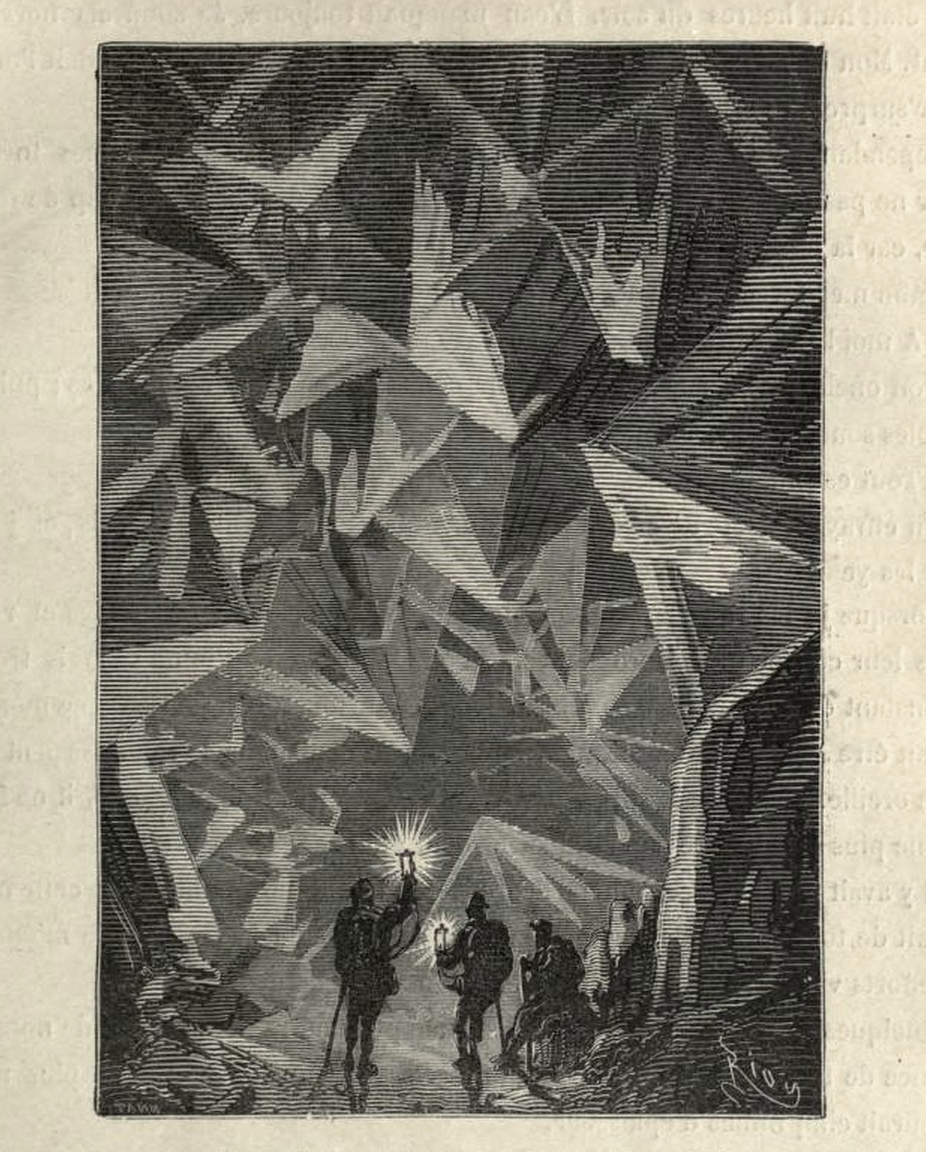 Below, the Cave of the Crystals ~ Naica Mine, Mexico discovered in 2000
|
|||||
| Cave of the Crystals ~ Naica Mine Naica, Chihuahua, Mexico |
|||||
|
Gypsum crystals of the Naica cave. Note person for scale. Author: Alexander Van Driessche Cave of the Crystals or Giant Crystal
Cave (Spanish: Cueva de los Cristales) is a cave connected to the
300 metres (980 ft) below the surface in Naica, Chihuahua, Mexico.
The main chamber contains giant selenite crystals (gypsum, CaSO4·2 H2O), some of the largest natural crystals ever found. The cave's largest crystal found to date is 12 m (39 ft) in length, 4 m (13 ft) in diameter and 55 tons in weight. The cave is extremely hot, with air temperatures reaching up to 58 °C (136 °F) with 90 to 99 percent humidity. The cave is relatively unexplored due to these factors. Without proper protection, people can only endure approximately ten minutes of exposure at a time. A group of scientists known as the Naica Project have been heavily involved in researching these caverns. 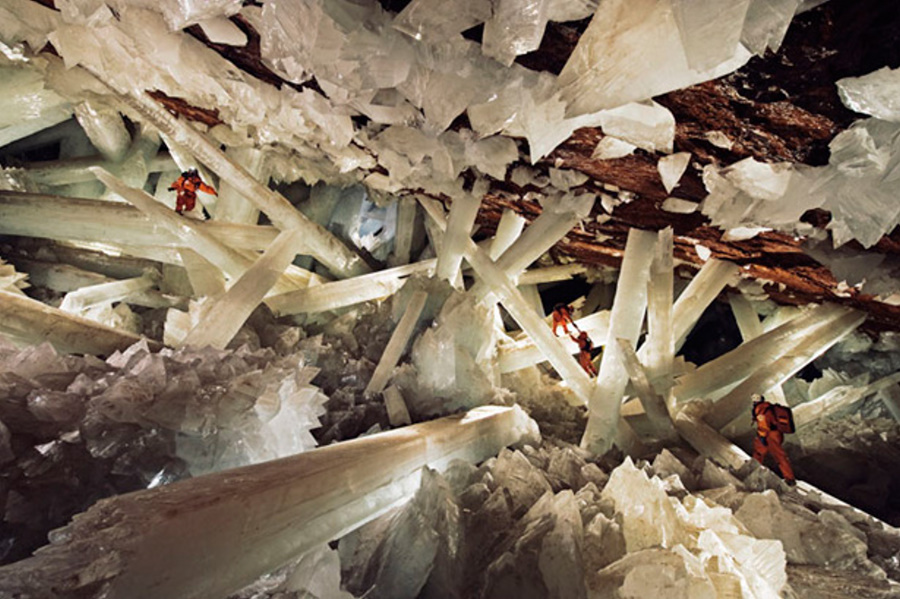 © Peter Carsten National Geographic - Speleoresearch Formation of the crystals
Naica lies on an ancient fault above an underground magma chamber below the cave. The magma heated the ground water which was saturated with sulfide ions (S2−). Cool oxygenated surface water contacted the mineral saturated heated water, but the two did not mix due to the difference in their densities. The oxygen slowly diffused into the heated water and oxidized the sulfides (S2−) into sulfates (SO42−). The hydrated sulfate gypsum crystallized at an extremely slow rate of over the course of at least 500,000 years forming the enormous crystals found today. The key to this process is the slow diffusion of oxygen from the cool, low density surface water into the hot, high density ground water. Water-clear selenite crystal "floater" from the Naica Mine. Size: 18×14×13 cm., weight 2.6 kg. Discovery
In 1910 miners discovered a cavern beneath the Naica mine workings, the Cave of Swords (Spanish: Cueva de las Espadas). It is located at a depth of 120 m, above the Cave of Crystals, and contains spectacular, smaller (1 m long) crystals. It is speculated that at this level, transition temperatures may have fallen much more rapidly, leading to an end in the growth of the crystals. Giant Crystal Cave was discovered in 2000 by miners excavating a new tunnel for the Industrias Peñoles mining company located in Naica, Mexico, while drilling through the Naica fault, which they were concerned would flood the mine. The mining complex in Naica contains substantial deposits of silver, zinc and lead. The Cave of Crystals is a horseshoe-shaped cavity in limestone. Its floor is covered with perfectly faceted crystalline blocks. Huge crystal beams jut out from both the blocks and the floor. The caves are accessible today because the mining company's pumping operations keep them clear of water. If the pumping were stopped, the caves would again be submerged in water. The crystals deteriorate in air, so the Naica Project is attempting to visually document the crystals before they deteriorate further. Two other smaller caverns were also discovered in 2000, Queen’s Eye Cave and Candles Cave, and a further chamber was found in a drilling project in 2009. The new cave, named Ice Palace, is 150 m deep and is not flooded, but its crystal formations are much smaller, with small 'cauliflower' formations and fine, threadlike crystals. All of the caves discovered currently are: Cave of Crystals, Queen's Eye, Candles Cave, Ice Palace and Cave of Swords. 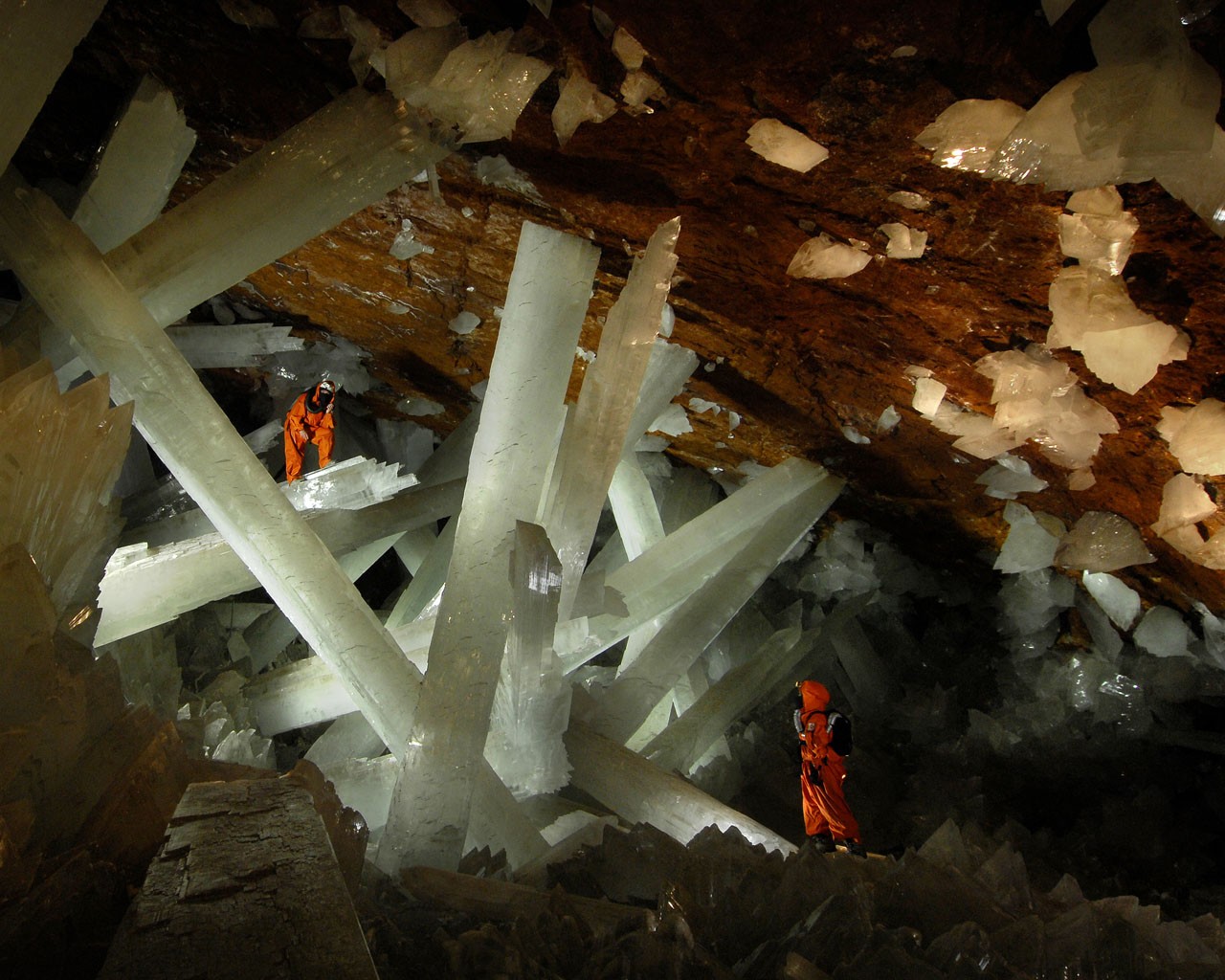 © Peter Carsten National Geographic - Speleoresearch The
spectacular Giant Crystal Cave is connected to the Naica Mine, located
in Chihuahua, Mexico. It goes around 300 meters bellow the surface. The
main chamber contains the largest selenite crystals ever found, some of
them reaching 11 meters in length, 4 meters in diameter and about 55
tons in weight.
Exploration and scientific studies
Beside mineralogical and crystallographic studies, biogeochemical and microbial characterization of the gypsum giant crystals were also performed. Stein-Erik Lauritzen (University of Bergen, Norway) performed uranium-thorium dating to determine the maximum age of the giant crystals, about 500,000 years. Penelope Boston (New Mexico Institute of Mining and Technology), speleologist and geomicrobiologist specialist of extremophile organisms realized sterile sampling of gypsum drill cores by making small boreholes inside large crystals under aseptic conditions. The aim was to detect the possible presence of ancient bacteria encapsulated inside fluid and solid inclusions present the calcium sulfate matrix from its formation. Solid inclusions mainly consist of magnesium and iron oxy-hydroxide but no organic matter could be found associated with the solid hydroxides. No DNA from ancient bacteria could be extracted from the solid inclusions and amplified by PCR. Microbial studies on fluid inclusions are foreseen to attempt to evidence the presence of ancient micro-organisms in the original fluid solution in which the crystals developed. Other researches also cover the fields of palynology (pollen study), geochemistry, hydrogeology and the physical conditions prevailing in the Cave of Crystals. Selenite "sword", 22.6×2.6×1.6 cm. A small version of the giant crystals, likely found in a natural cavity in the mine. Rob Lavinsky, iRocks.com – CC-BY-SA-3.0 Gypsum (Var.: Selenite) Locality: Naica, Municipio de Saucillo, Chihuahua, Mexico (Locality at mindat.org) A tall, gemmy, spectacular crystal of selenite from Naica! It is just GLASS-CLEAR, with VERY minor wear compared to what you normally see on these super-soft specimens (2 on the Mohs scale). Fabulous termination and sharp faces; non-mineral collectors can hardly believe these grow naturally. 22.6 x 2.6 x 1.6cm Future closure
The cave was featured on the Discovery Channel program Naica: Beyond The Crystal Cave in February 2011. Exploration has given credence to the existence of further chambers, but further exploration would have required significant removal of the crystals. As the cave's accessibility is dependent on the mine's water pumps, when mineral exploitation is ended in the area it is likely the pumps will be shut off and the cavern's water level allowed to rise again. SOURCE: Cave of the Crystals Sketch From Jules Verne's "Journey to the Center of the Earth"
 Look familiar? The Earth may not be totally hollow as once believed but it sure seems to have a lot of Hollow Spots. So how did Jules Verne get such an accurate view of these giant crystals 100 years before they were discovered? |
|||||
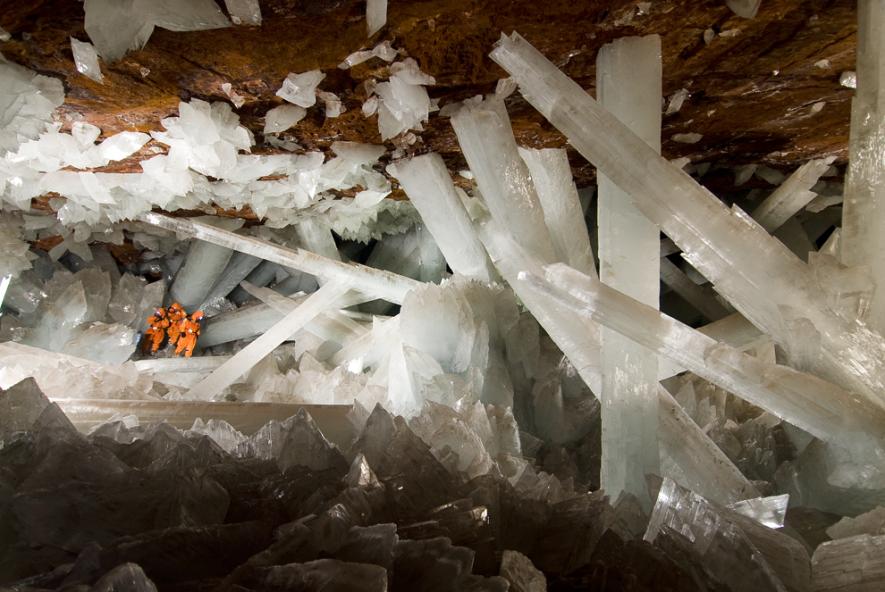 Giant Crystal Caves Yield New "Ice Palace," More Scientists (left) in ice-cooled suits explore Mexico's deadly hot Cave of Crystals (file photo) PHOTOGRAPH COURTESY OSCAR NECOECHEA, SPELEORESEARCH & FILMS/NGT The conditions here are extreme, with a
constant temperature of 58 °C and high humidity, proving to be a
dangerous environment for those who are exposed more than 10 minutes
without proper equipment. The crystals are said to be 500,000 years old
and were formed from the underground magma (situated below the cave)
which maintained the water at a stable temperature of 50°C, saturating
it with minerals, including gypsum. This process allowed the selenite
crystals to grow to the unbelievable sizes that we see today.
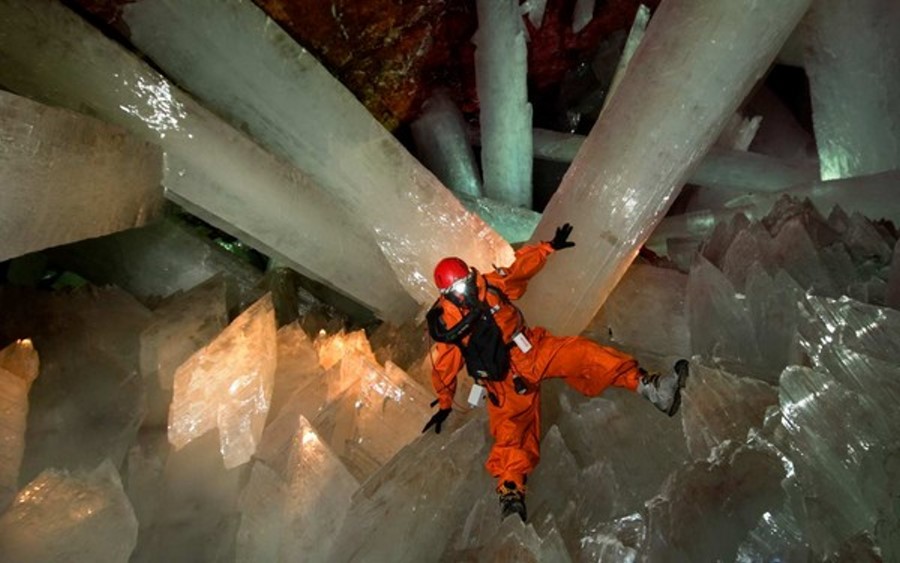 Photo credits: Carsten Peter, photographer at National Geographic. 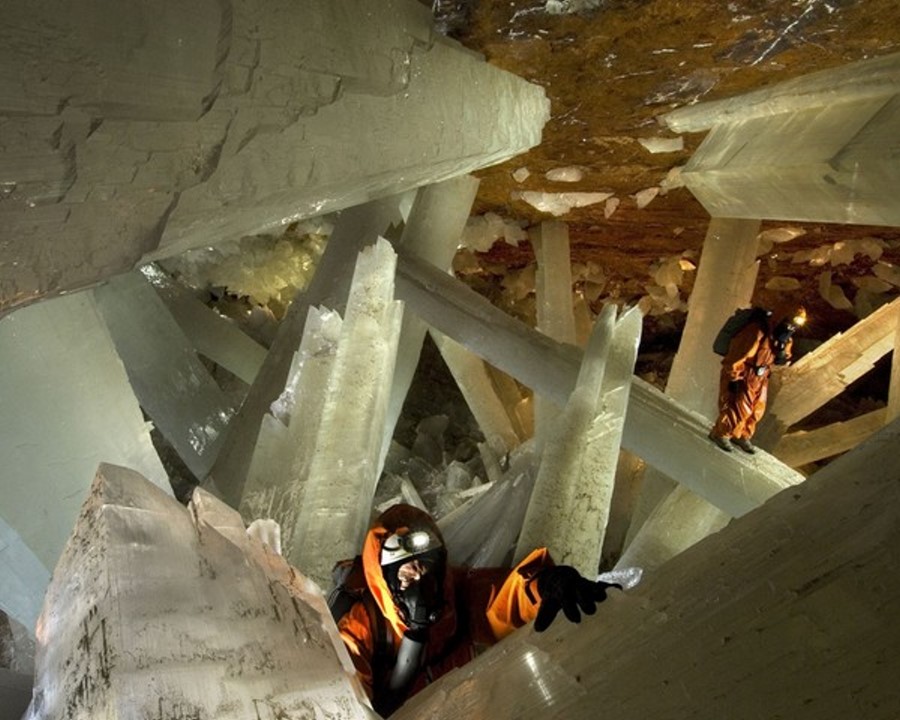 Photo credits: Carsten Peter, photographer at National Geographic. 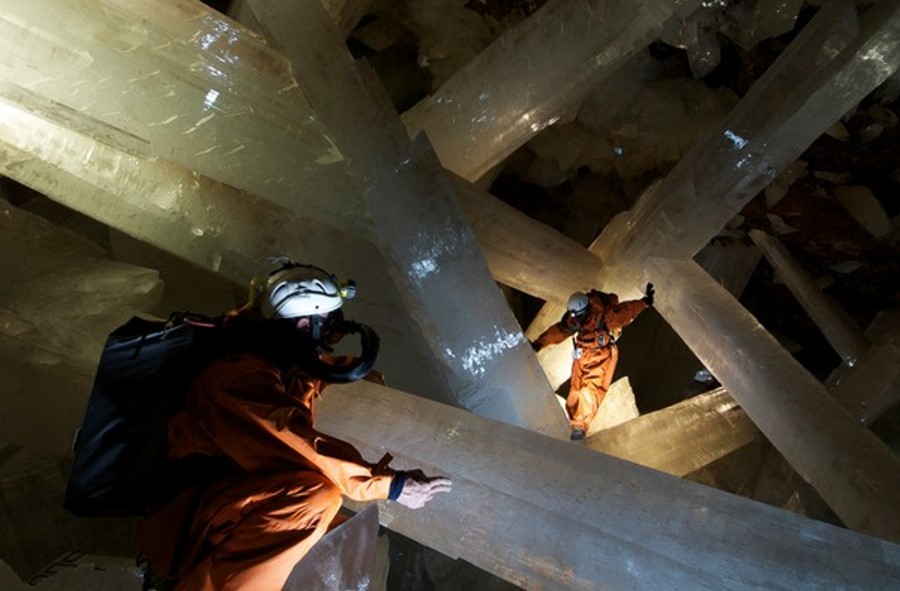 Photo credits: Carsten Peter, photographer at National Geographic. 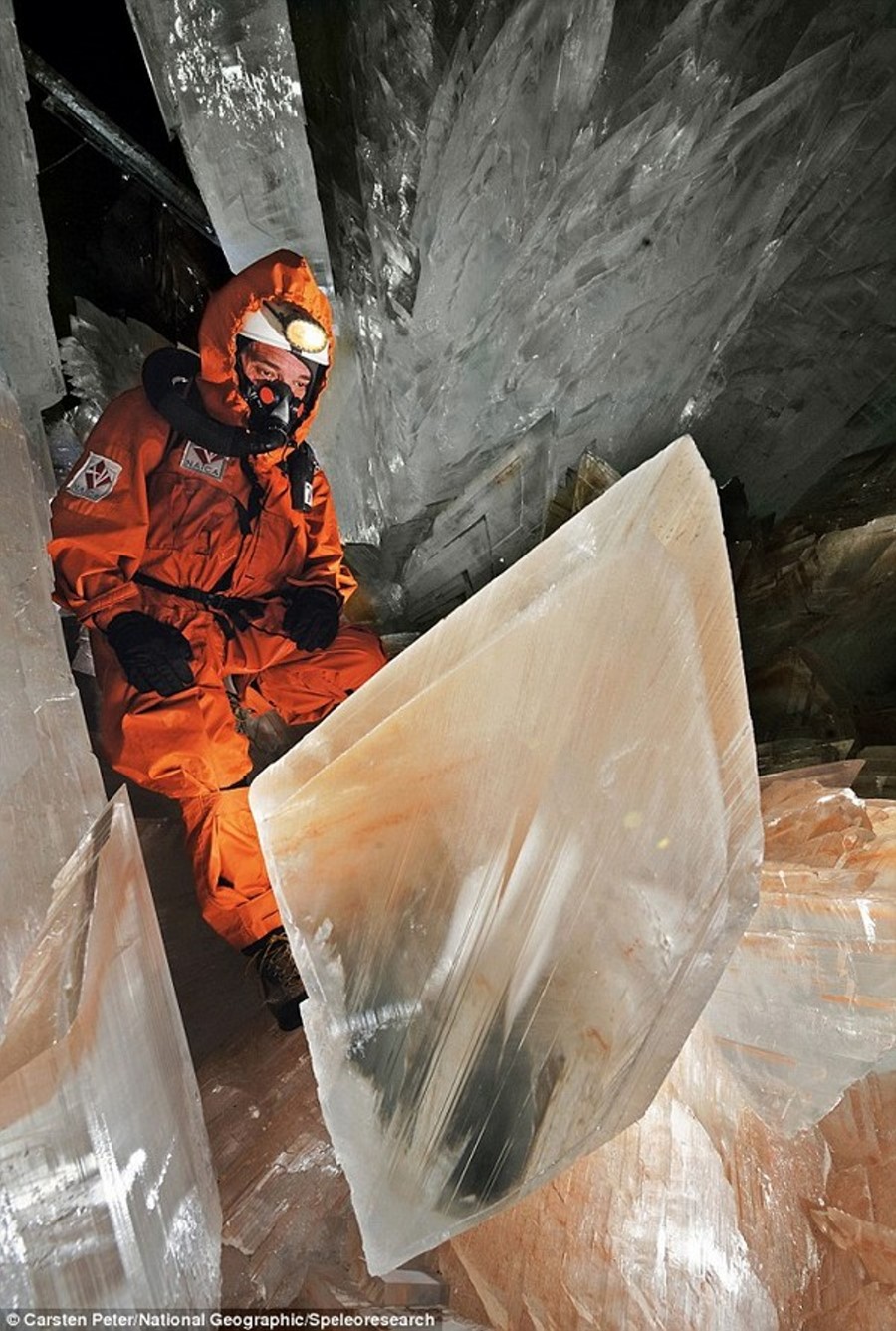 Photo credits: Carsten Peter, photographer at National Geographic. 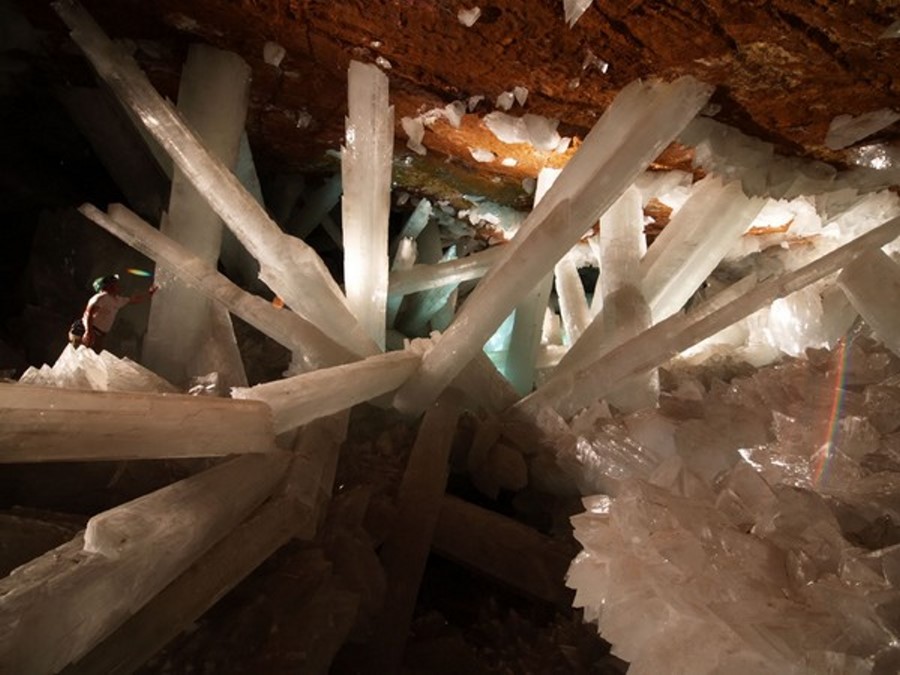 Photo credits: Carsten Peter, photographer at National Geographic. 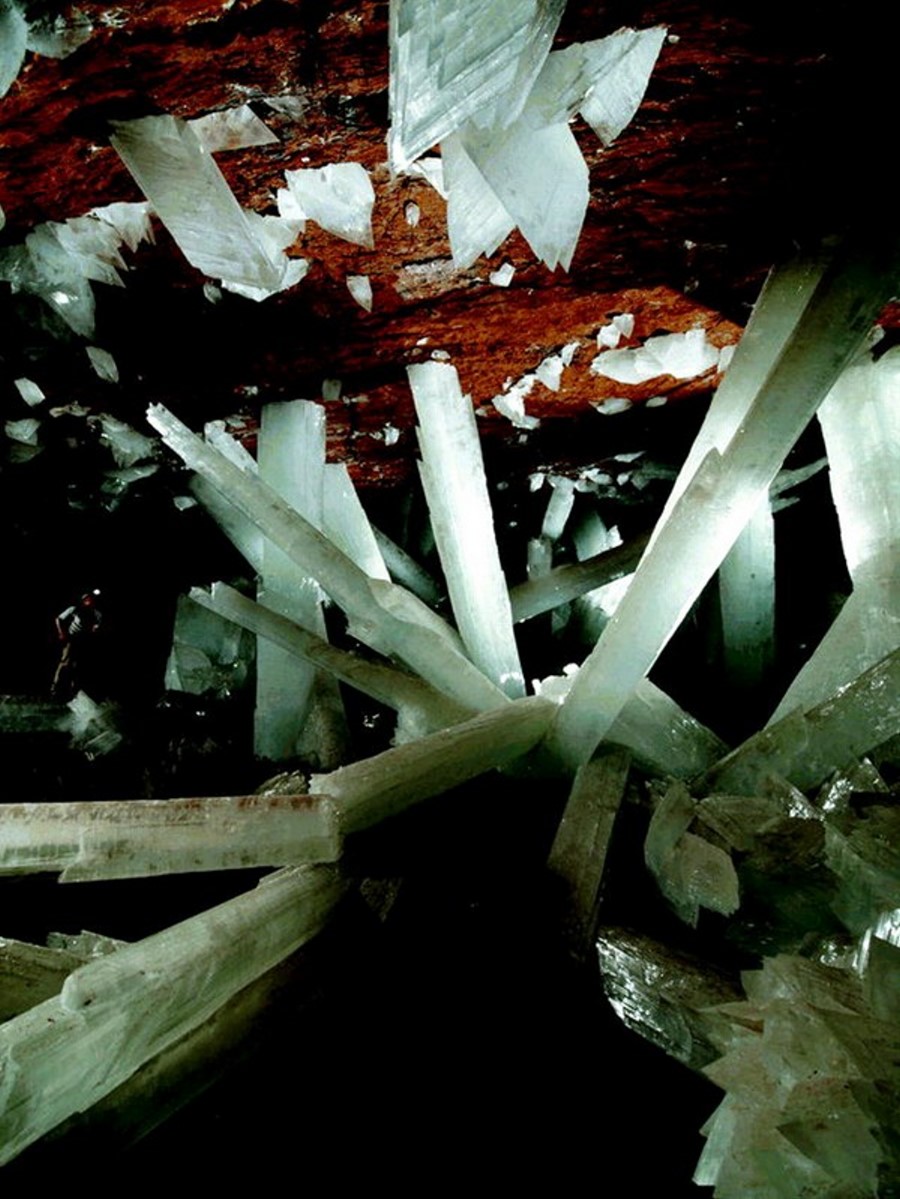 Photo credits: Carsten Peter, photographer at National Geographic. |
|||||
Naica Crystal Cave Mexico
|
|||||
Related Links:
|
|||||
| FAIR USE NOTICE: This page contains copyrighted material the use of which has not been specifically authorized by the copyright owner. Pegasus Research Consortium distributes this material without profit to those who have expressed a prior interest in receiving the included information for research and educational purposes. We believe this constitutes a fair use of any such copyrighted material as provided for in 17 U.S.C § 107. If you wish to use copyrighted material from this site for purposes of your own that go beyond fair use, you must obtain permission from the copyright owner. | |||||
|
|
